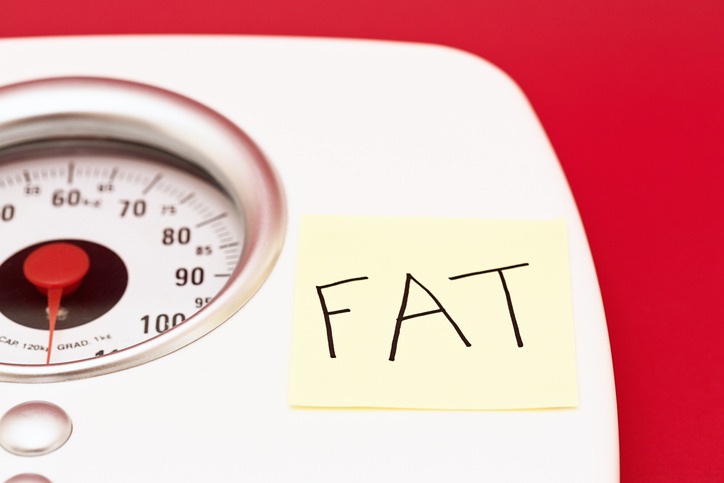Obesity is one of the most highly stigmatized conditions a person can experience in this day and age. It is one of the few populations where it is still considered socially acceptable to overtly discriminate against and even mock those that fall short of the socially prescribed ideal. The world we live in is hypercritical about our bodies, and the eating disorder research suggests these messages contribute to the endorsement of a negative belief system that our individual worth is directly determined by the numbers on our scale (Culbert et al., 2015; Martin, 2010).
Every day, we are inundated with messages that suggest that, regardless of our weight, those who resemble anything shy of a stick figure fall grossly short of being “good enough,” and social structures co-sign this belief every single day—restaurant booths in many restaurants are not adequate for people of size, airplane seats are incredibly small, people in the general public may point, stare, or make derogatory comments. Often, well-meaning doctors shame their patients, provide inadequate assessment, and disregard their patient’s medical concerns, assuming their obesity is the only reasonable explanation for their presenting symptoms. Even our friends and family may contribute to the bias we experience with implicit messages of judgment and shame such as, “are you sure you really want that?” or, “are you really still hungry enough for seconds.”
On September 6, 2019, comedian and political commentator, Bill Maher, delivered an anti-fat monologue on his program Real Time, featured on HBO. Maher (2019) suggests that “fat-shaming needs to make a comeback,” asserting that shaming others is the “first step toward real reform.” Maher goes on to equate the American obesity crisis by equating the act of overeating to racism, objectifies women, and suggests obese individuals are sexually reprehensible. He minimizes the devastating loss of life to recent mass shootings by suggesting the statistics pale in comparison to obesity-related deaths, and goes on to suggest that individuals of size hold a significant share of the responsibility for climate change. By suggesting that individuals of size should be admonished in public ways, Maher serves as a prime example of the social construction of eating disorders and, he is a direct contributor to this important social issue.
Unlike other issues, it seems that all bets are off when it comes to an individual’s food, body, and just how an overweight individual moves through the world. Regardless of how comfortable one may be in their body, these experiences impact people deeply—and only serve to further perpetuate the collateral damage resulting from past trauma. The truth is, some trauma is so severe that we wear our scars on the outside so that others know where we stand and to create a feeling of safety in a world that hasn’t always been experienced as safe. Obesity is one way to create a barrier between the self and a world that feels uncertain, unpredictable, and potentially a threat to our survival.
In his anti-fat rhetoric, Maher points out that “No one comes out of the womb needing to buy two airplane seats.” However, what he fails to acknowledge is the strong correlation between obesity and trauma. While Mr. Maher may have found alternative ways of coping with devastating life events, some of us wear our scars on our bodies–and that doesn’t make us any less human than he. All relationships are complex—and that includes our relationship with our own body!
Body-shaming is simply not a call to action. Research has consistently shown that weight stigma results in a significant risk factor for an increase in depression, low self-esteem, and body dissatisfaction (Andreyeva et al., 2008). Additionally, being the target of weight-based bullying has been shown to be a predictor of weight gain, binge eating, and extreme weight control measures (Golden et al., 2016). Until we begin to recognize the complexity of weight and an individual’s relationship with their body, and hold people accountable for their poor behavior, we will continue to perpetuate a culture where individuals of size are punished simply for taking up space.
References
Andreyeva, T., Puhl, R. M. & Brownell, K. D. (2008). Changes in perceived weight discrimination among Americans, 1995–1996 through 2004–2006. Obesity, 16(5): 1129–1134. doi:10.1038/oby.2008.35
Culbert, K. M., Racine, S. E., & Klump, K. L. (2015). Research review: What we have learned about the causes of eating disorders – a synthesis of sociocultural, psychological, and biological research. Journal of Child Psychology Psychiatry, 56(11), 1141-1164.
Golden, N. H., Schneider, M., & Wood, C. (2016). Preventing obesity and eating disorders in adolescents. Pediatrics, 138(3), [e20161649]. doi:10.1542/peds.2016-1649
Martin, J. B. (2010). The development of ideal body image perceptions in the United States. Nutrition Today, 45(3), 98-100. Retrieved from nursingcenter.com/pdf.asp?AID=1023485
Real Time with Bill Maher. (2019, September 6). New rule: The fudge report. [Video]. YouTube. https://www.youtube.com/watch?v=Dm4TAdiEFn0&feature=youtu.be

